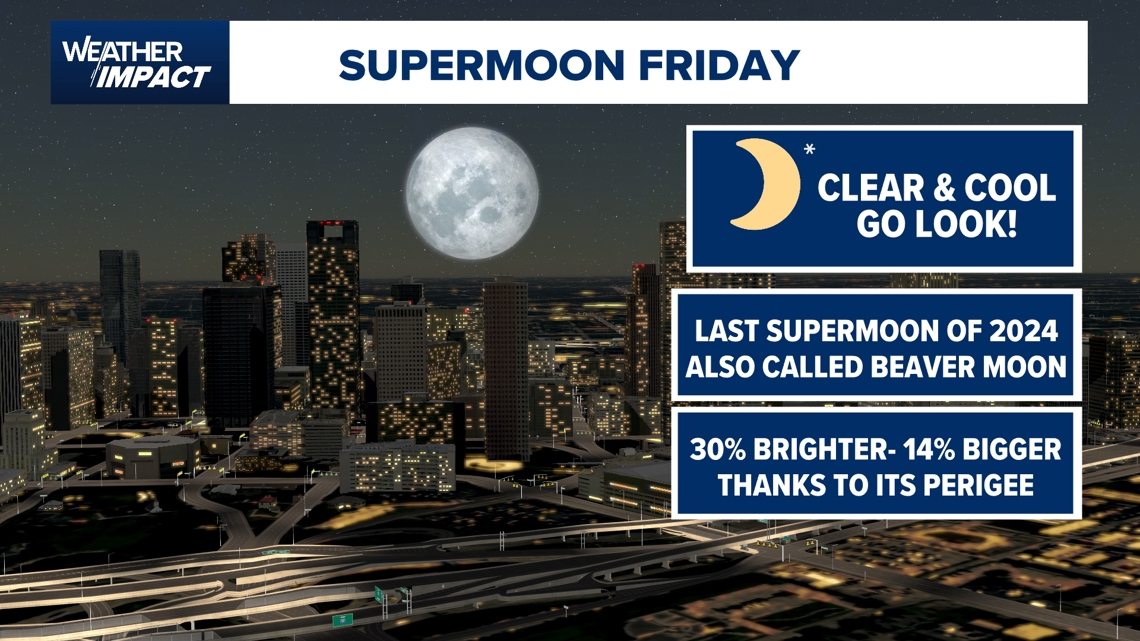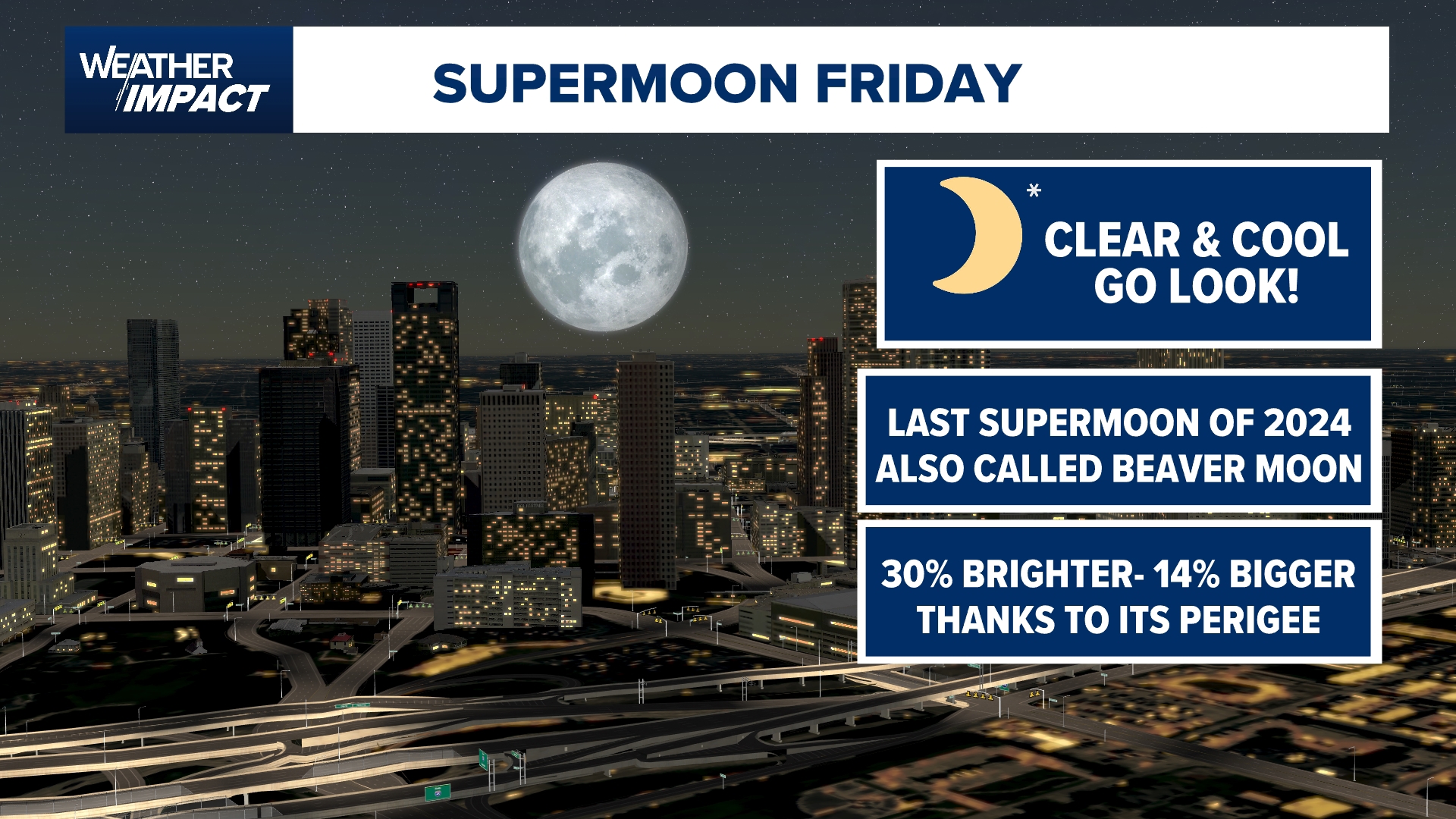HOUSTON — Better catch this week's supermoon. It will be a while until the next one.
This will be the year’s fourth and final supermoon, looking bigger and brighter than usual as it comes within about 225,000 miles of Earth on Thursday. It won't reach its full lunar phase until Friday. According to NASA's Johnson Space Center, this supermoon is known as the Beaver Moon.
Meteorologist Chita Craft said the moon may be visible starting at 3:29 p.m. Friday. Sunset is at 5:26 on Friday. NASA said the moon will also appear full Saturday evening.
The supermoon rises after the peak of the Taurid meteor shower and before the Leonids are most active.
In Southeast Texas, we are expecting clear skies and cool temperatures Friday evening thanks to a cold front that moves through Wednesday evening.
Last month’s supermoon was 2,800 miles closer, making it the year's closest. The series started in August.
In 2025, expect three supermoons beginning in October.


What makes a moon so super?
More a popular term than a scientific one, a supermoon occurs when a full lunar phase syncs up with an especially close swing around Earth. This usually happens only three or four times a year and consecutively, given the moon’s constantly shifting, oval-shaped orbit.
A supermoon obviously isn’t bigger, but it can appear that way, although scientists say the difference can be barely perceptible.
How do supermoons compare?
This year features a quartet of supermoons.
The one in August was 224,917 miles away. September’s was 222,131 miles away. A partial lunar eclipse also unfolded that night, visible in much of the Americas, Africa and Europe as Earth’s shadow fell on the moon, resembling a small bite.
October’s supermoon was the year’s closest at 222,055 miles from Earth. This month's supermoon will make its closest approach on Thursday with the full lunar phase the next day.
What’s in it for me?
Scientists point out that only the keenest observers can discern the subtle differences. It’s easier to detect the change in brightness — a supermoon can be 30% brighter than average.
With the U.S. and other countries ramping up lunar exploration with landers and eventually astronauts, the moon beckons brighter than ever.

